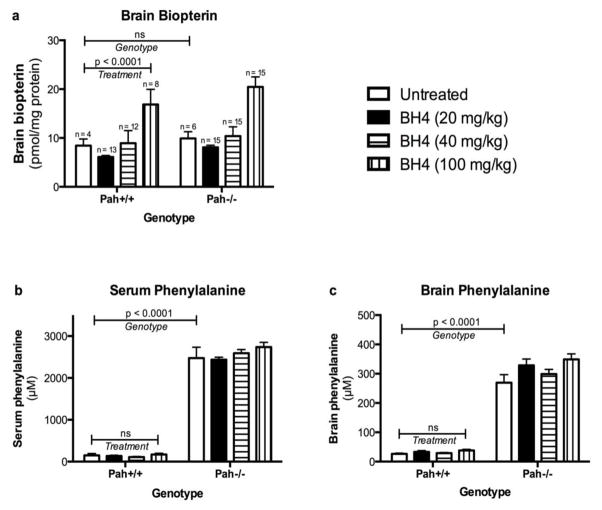Figure 3. Effect of Pah genotype and sapropterin treatment upon brain biopterin, serum and brain phenylalanine.
Brain biopterin content (pmol/mg protein, mean ± SEM) (a) following either sapropterin treatment (BH4) or 1% ascorbic acid by gavage feeding in wild type (Pah +/+) and Pahenu2/enu2 (Pah−/−) mice. The data are the means of brain biopterin content from all animals at all time points up to six hours following gavage. Sapropterin treatment yielded a significant increase in brain biopterin content (two-way ANOVA, p < 0.0001) across all groups but only the 100 mg/kg sapropterin dose yielded a significant increase (p < 0.01) in brain biopterin in comparison to 1% ascorbic acid when analyzed by Bonferroni posttest intergroup analysis. There was no significant effect of genotype (Pah+/+ vs. Pah−/−) upon brain biopterin content. Serum (b) and brain (c) phenylalanine concentration (μM, mean ± SEM) in Pah+/+ or Pah−/− mice treated with sapropterin (BH4) or 1% ascorbic acid. The horizontal bars represent the statistical significance of the effects of either Genotype or sapropterin Treatment upon the brain biopterin, serum phenylalanine and brain phenylalanine concentrations as calculated by two way ANOVA. The Pah genotype had no effect upon brain biopterin content following sapropterin treatment. As expected, both serum and brain phenylalanine were extremely elevated in Pah−/− mice in comparison to Pah+/+ animals. Sapropterin treatment had no significant (ns) effect upon either serum or brain phenylalanine.

